
“Seafood Encounters” by Robert. All photos © 2020 by Inside Chinatown participants.
—Inside Chinatown Participant
“Seafood Encounters” is a photo of the fish counter at a local grocery store with a male Chinese worker in the background filleting a fish. The caption reads, “They have surgeon-like precision when filleting the seafood. In fact, some of them were surgeons before they immigrated here.” This image and others in Robert’s series of photos entitled Unsung Heroes and Heroines are a testament to the day-to-day struggles and sacrifices of immigrants like his parents and workers in Chinatown. Robert is a worker in Boston Chinatown who participated in the Inside Chinatown project to document the neighborhood, which is critical during this time of rapid displacement of residents, luxury development, and gentrification. As an immigrant who came from China at an early age, Robert spent his childhood accompanying his father to the restaurant where he worked. Robert was struck by his father’s story and his sacrifices—a man who had a good job in China but immigrated to the United States because he felt his family could have a better life here. Restaurants are fundamental to the ecosystem and economic viability of Chinatowns across the U.S. and their immigrant workers, yet we do not often know about the lives of the workers (Lee 2013). In illuminating the significance of restaurants and restaurant workers, Robert wanted to shed light on the people “who do not get enough credit.” He hoped his photos encourage people to have a broader perspective on workers in Chinatown aside from their role as workers. About the restaurant workers and dishwashers, “There is so much more to them,” Robert asserted. For residents and workers like Robert, Boston Chinatown is one such Chinatown that is fighting to maintain its historical and cultural legacy as a home to the Chinese immigrant community in the wake of rapid displacement of longtime residents and luxury development (Lee and Bell 2019). These development trends affect not only residential composition but also the health and well-being of remaining residents, particularly the elderly and recent immigrants, who experience more stress and social isolation. The majority of Asian households in Chinatown have limited English proficiency and rely on both formal and informal social networks of neighborhood service providers, nonprofits, friends, and relatives to access jobs, services, and translation assistance. This article presents a case study of Inside Chinatown, a project that enabled current and former residents and workers of Boston Chinatown to use photography and visual storytelling to create their own narratives about this moment in Chinatown’s history. The project took place November 2018 to December 2019. First we describe the structure and curriculum of the project, followed by examples of participants’ photos. The participants in the program, workers and residents in Boston Chinatown, documented their daily experiences, engaging with Chinatown’s history, notions of home, traditions, rituals, and identity to address the question asked by the program for participants to consider: “What does Chinatown mean today and how does it shape a Chinese American identity?” They took photos, wrote artist statements about the work, and wrote captions to accompany the photos. The artist statements provided context for the series of photos taken by each artist and their intentions of what they were trying to capture through the photographs. This year long project culminated in a group photo exhibition at Pao Arts Center. Their photos are multifaceted stories of the people of Chinatown, whose stories collectively, as Robert wrote, “may be longer than the Great Wall of China!” Informal learning spaces: Creating conditions for community-based education Inside Chinatown took place at Pao Arts Center (the Center) in Boston Chinatown. The Center opened in January 2017 as a new arts space. It is a project of the Boston Chinatown Neighborhood Center (BCNC), the largest social service agency serving the Asian community in the Greater Boston region, and Bunker Hill Community College. BCNC’s vision for the Center was to amplify Asian American and Asian immigrant voices and create a physical community space for using art, culture, and creativity to improve health and well-being of the neighborhood. Center staff and University of Massachusetts Boston (UMB) faculty conceived of this project, which was supported by Mass Humanities. BCNC and UMB Asian American Studies have a longstanding relationship. The project team included members from the institutional partners. The Project Scholar (Loan Dao) and Project Facilitator (Izabela Villaneuva) were from UMB and specialized in Asian American and Ethnic Studies. The Project Director (Cynthia Woo) and Project Associate (Vanessa Woo) worked at the Center. The team designed the participant application to be bilingual in English and Chinese, and applicants could complete it by phone, email, or hand. The project team had a mix of native Cantonese, Mandarin, and English speakers. The Project Associate provided simultaneous translation for two participating elders who spoke Cantonese. Outreach through the Chinese Residents Association, senior classes at the Center, neighborhood business owners, and UMB residential buildings produced a mix of participants, including residents, business owners, high school students, retirees, and administrative workers. The age range was equally diverse with two high school students, four seniors, and participants of many ages in between. The pedagogical approach of Inside Chinatown demonstrated best practices in how to bring local cultural knowledge to bear on important social justice issues using the power of observation through visual storytelling. Spiegel (2020) argues that when historically marginalized communities have the power of telling their own stories through visual storytelling in photography, “ideas about ‘place’ and the relations that shape particular place-based knowledge could be framed through diverse individual and collectively shared histories, inflected by class, gender, age, ethnicity, and a range of idiosyncratic experiences that might defy such categories” (126). Visual storytelling attempts to re-center historically marginalized communities to narrate their own stories, highlighting narratives that are important to them, thus reframing themselves through counter-hegemonic stories and creative practice. This methodology involves teaching people how to use cameras and preparing them to tell stories through a process of prompt-based, scaffolded discussions that illicit their stories as experts of their own lives, removed from dominant cultural perceptions of them, their culture, and their environment (Wang and Burris 1997). Making the program accessible, in terms of schedule, language, and income, facilitated participation of some people who often do not have access to formal learning spaces. The iterative curricular design gave space for participants’ voices, experiences, and perspectives to drive the evolution of the program organically, ensuring that it always was rooted in community knowledge. The Curriculum Example in our Classroom Connections at the end of this article illustrates how the curriculum evolved over time to embody these principles. In recognition of financial barriers to participation, the residents and workers received a stipend. In addition, three cameras were available for participants to check out and use for the January-June 2019 photography process. Editing equipment such as a laptop with editing software was available at the Center during open hours, 9:00 am-8:00 pm, Monday-Saturday. The elders would often use the equipment during weekdays. The Project Facilitator remembers that one participant watched YouTube videos to learn to use all the camera functions and started taking photos from the beginning. This student, Edward, said, “I wanted to have as much practice as possible to create the best final pieces.” All four project team members collaborated in the curriculum planning phase and development of the overall framework. They ensured that the academic content was balanced with interactive, discussion-based activities so sessions were not didactic. Brief evaluations followed each session. The team met regularly to debrief sessions, look at evaluations, create a preliminary structure for each upcoming workshop, and talk through how to make the content streamlined and accessible. During workshops, the team quickly realized they had to make real-time decisions and adjustments to make sure the workshops were accessible and relevant to participants. Using photography and storytelling to create resident and worker-centered narratives This program was inspired by photographer Katie Salisbury’s photo essay Thank You, Enjoy, a portrait of restaurant and food delivery workers in New York City’s Chinatown. The Project Scholar initially explored ways to connect issues of race and ethnicity with worker rights. On a visit to New York, she happened upon Salisbury’s exhibit. Her work extended beyond the specific geography of the city’s working class of Chinatown to the experiences of Chinatown workers across the country. The Project Scholar reached out to Salisbury, the UMass Boston Labor Resource Center, and Boston Chinatown organizations to explore whether a collaboration to bring the exhibit to New England was of interest to these campus and community partners. The Center Director suggested a broader program that integrated local Chinatown workers and residents and highlighted Boston Chinatown. Together, the Project Director and Project Scholar created Inside Chinatown, for which the Center received a grant to pay for participant stipends, a bilingual-bicultural graduate student assistant to facilitate the program, photography equipment, and Center staff time. Thank You, Enjoy opened at UMass Boston in November 2018, as a collaboration with UMass Boston’s Labor Resource Center and Asian Student Center. It featured a public opening reception and panel with the artist, exhibition partners, and guest speakers from the Chinese Progressive Association, and served to recruit participants for the Inside Chinatown project. Salisbury’s work gave a real live example of what a photography exhibit generated by the actual workers and residents of a neighborhood could look like. Engagement with Salisbury was interwoven through the curriculum. She worked with the cohort at the beginning of the program and toward the end. In session one Salisbury modeled her storytelling process for Thank You, Enjoy from image selection, photography technique, written artist statements, and caption, and in session two she worked one-on-one with participants to deliver feedback and refine their own stories and photographs. Her exhibit grounded the work of the project team and allowed participants to see a model of how photography could shed light on untold stories, preparing participants to create narratives rooted in their experiences, rituals, and traditions. At the onset, the project team was deliberate in setting up the project to be an ongoing community resource. Photographs and artist statements would be archived at the Chinese Historical Society of New England (CHSNE), a local nonprofit dedicated to preserving Chinese American history for present and future generations. Archiving the photographs ensures residents’ and workers’ perspectives are given priority when remembering this time in Chinatown’s history. Housing the photographs at CHSNE ensures that this community resource can be accessible to others and be used as archival materials for classroom use, representing a perspective not typically heard in formal academic spaces. The Chinatown Gate: The power of intergenerational storytelling
“Popular Gate” by Yang.

“Still Standing” by Edward.
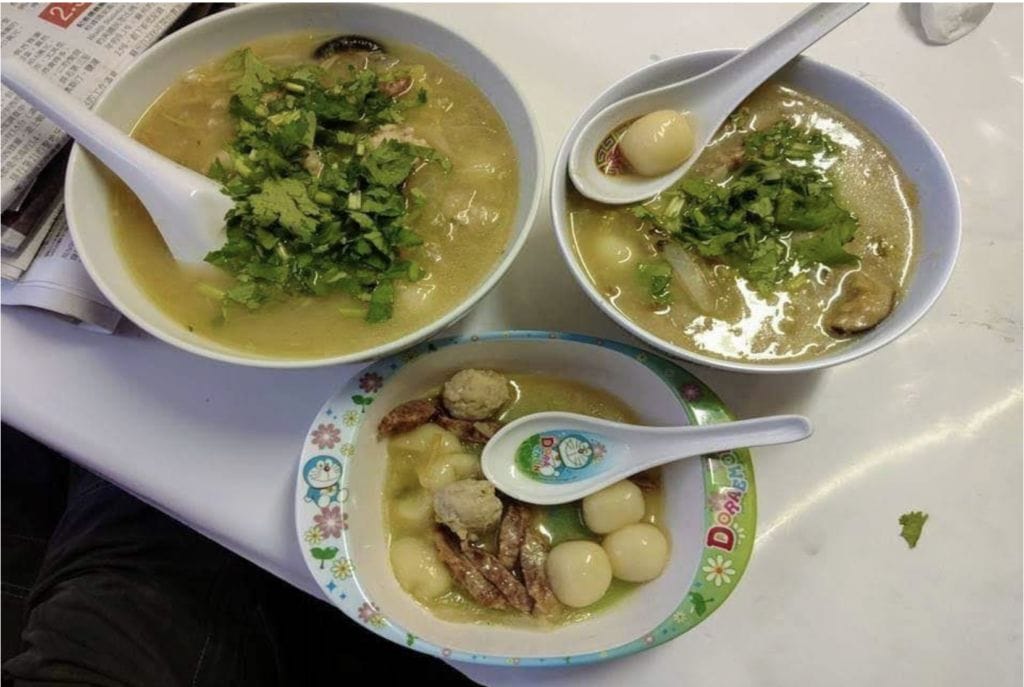
“湯圓 (Tang Yuen)” by Liz.
The term Jook Sing is Chinese slang used in a negative way to refer to Chinese who were not born in China. It translates to hollow bamboo; the bamboo is hollow and compartmentalized, and thus water poured in one end does not flow out of the other end. The metaphor is that Jook Sings are not part of either culture—water within the Jook Sing does not flow and connect to either end. [My mother] taught us to embrace the term positively, and she showed us that we get the best of both worlds. We weren’t just Chinese and we weren’t just American; we were Chinese American and with that we got to break the mold of stereotypes and create our own identity.Most of her photos depict traditional Chinese rituals, traditions, and food made for Chinese holidays such as Lunar New Year, Winter Solstice (“Tang Yuen”), Grave Sweeping Day, Mid-Autumn Festival, and Ching Ming, or Chinese Memorial Holiday, when families go to the cemetery to pay respect to the ancestors by lighting incense, bringing food, burning money, and bowing with respect three times. When Liz exhibited her photos at the Center, she placed two contrasting photos deliberately side by side. A picture of her daughter’s baptism, family gathered around a baptismal font, stood in contrast to the picture of the same child having a red egg rolled over her head, a traditional Chinese custom for newborns. These pictures illustrate the blend of western and Chinese traditions. Although Liz admits that knowledge of the origins of these traditions may have been lost, the meaning of the tradition and the connection to heritage are still salient and resonant with the Jook Sing. Although the legacy of racism and colonialism has caused many immigrants to become disconnected from their heritage, Liz, through her visuals, reclaims the beauty and richness of being part of two cultures, determined that her Chinese heritage not be replaced by the commercialization and commodification of Asian “otherness” (Lee 1999). Liz’s approach to her exhibit, her curatorial choices, and her photographic content offer an insight into the ways in which the participants used this program as an opportunity to disavow the spectacle of Chinese cultural exoticization to share cultural rituals and traditions that carry meaning and memory within the Chinatown community (Anderson 1987, Andreoli 1994). Digital storytelling challenges stereotypes and creates counternarratives as it humanizes (Greene et al. 2018.) During the process of creation, individuals have the opportunity to “learn about self through story-making” and “establish a sense of community by learning history” (Greene et al. 2018). Engaging in visual storytelling provides a sense of safety so that individuals can “express vulnerability.” “Raining and Wet”: Shining light on the beauty of everyday life in Chinatown
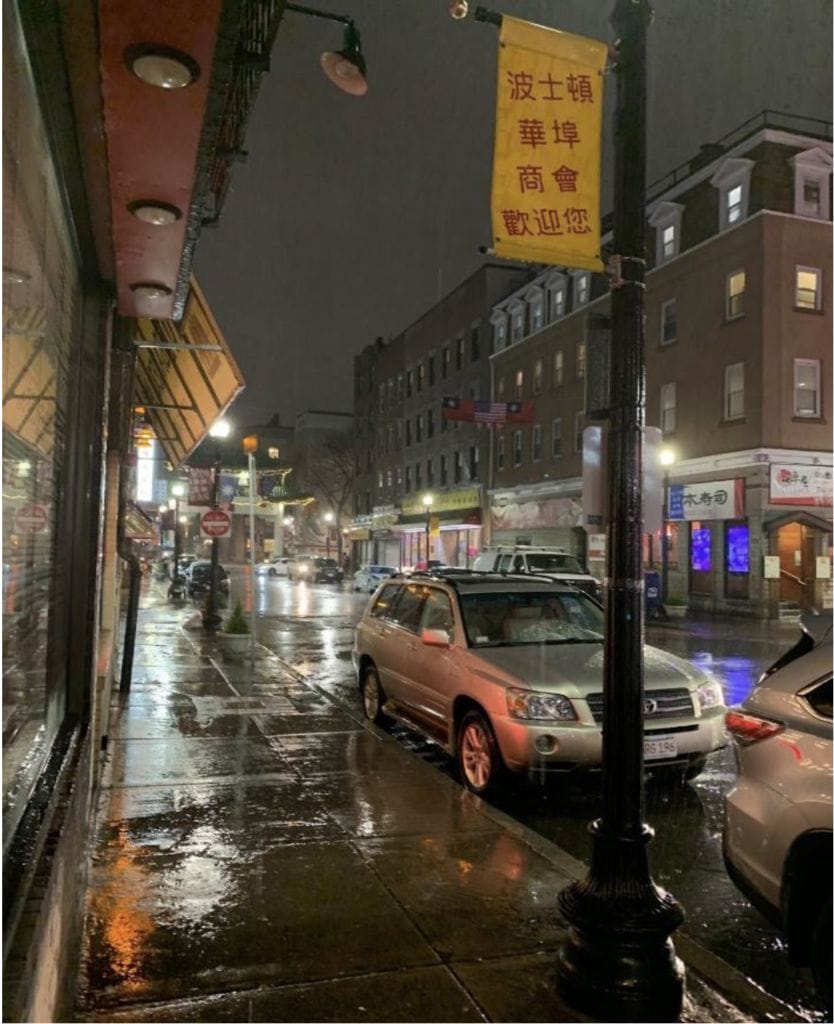
“Raining and Wet” by Ling.
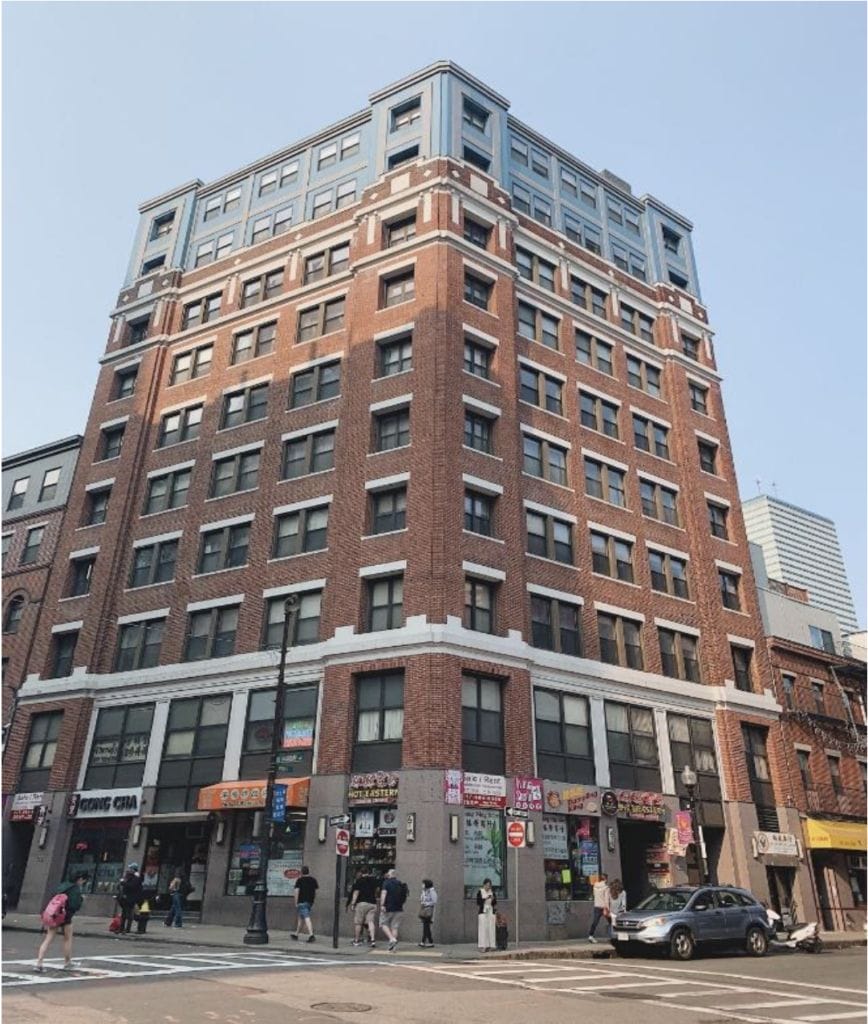
“Blue Top” by Meihua.
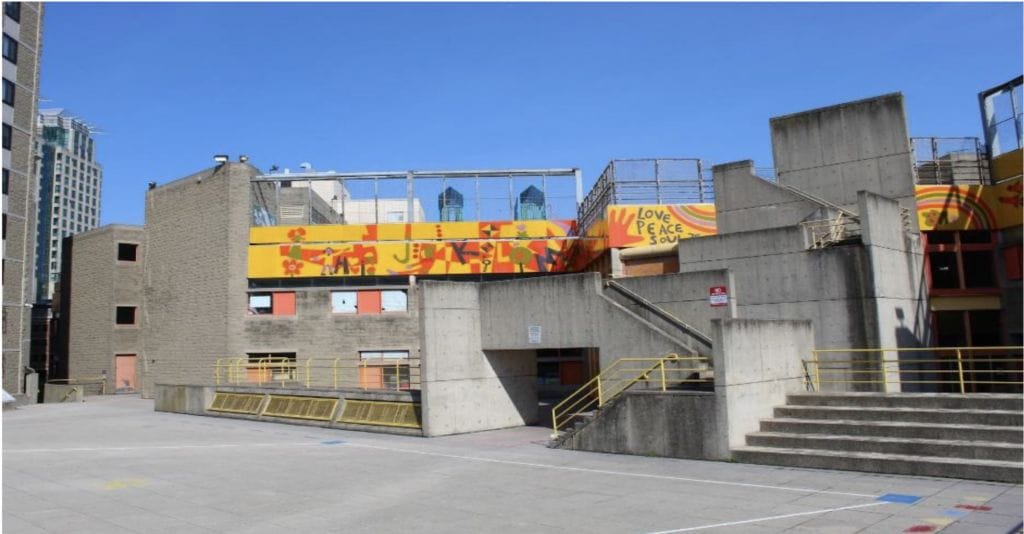
“Concrete Jungle” by Edward.
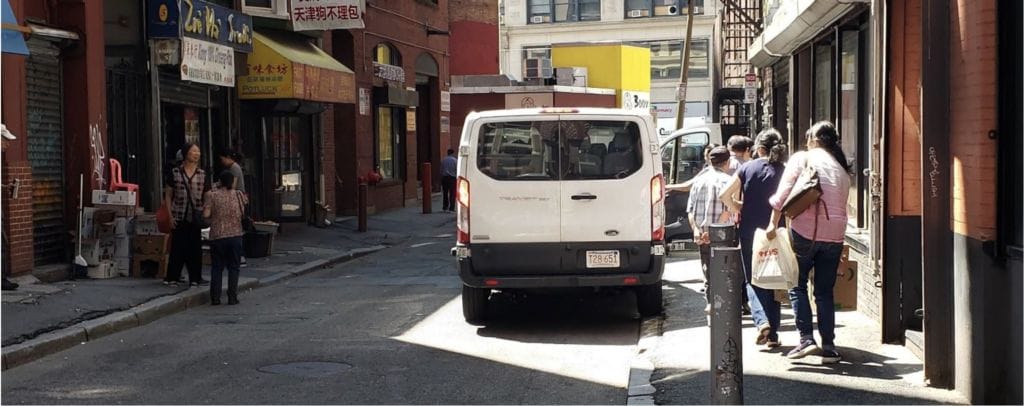
“Go” by Cathy.
Find the Classroom Connections that accompany our article here. Acknowledgements This paper honors the work, legacy, and life of Tunney Lee, Chinatown historian, activist, and teacher. We thank the funders: the Boston Cultural Council, Mass Humanities (which receives support from the Mass Cultural Council and is an affiliate of the National Endowment for the Humanities), ArtPlace America, and the Barr Foundation. We thank those who made this project possible: the teachers, Tunney Lee, Katie Salisbury, Denise Khor, and Jessica Wong Camhi; organizational collaborators: the Chinese Historical Society of New England, University of Massachusetts Labor Resource Center, and Chinese Progressive Association; and project staff: Vanessa Woo, Project Associate, and Claire Freeman, Project Intern. We thank Amanda Yuan for her work as a research assistant in preparing the bibliography. Carolyn Leung Rubin, EdD, is Assistant Professor at Tufts University School of Medicine. She was the lead evaluator for Pao Arts Center. Loan Thi Dao, PhD, is Associate Professor and Director of Ethnic Studies at St. Mary’s College of California. Izabela Villanueva, MS, is an alumna of the Transnational Cultural and Community Studies Program at University of Massachusetts Boston. Cynthia Woo, MA, is Director of Pao Arts Center, Boston Chinatown Neighborhood Center. Works Cited Anderson, Kay J. 1987. The Idea of Chinatown: The Power of Place and Institutional Practice in the Making of a Racial Category. Annals of the Association of American Geographers. 77.4:580-98. doi.org/10.1111/j.1467-8306.1987.tb00182.x Andreoli, Elisabetta. 1994. Lina Bo Bardi: The Anthropological Gaze. Third Text. 8.28-29:87-100. doi.org/10.1080/09528829408576504 Asian Americans Advancing Justice. 2011. A Community of Contrasts: Asian Americans in the United States. Accessed August 14, 2020 https://www.advancingjustice-aajc.org/sites/default/files/2016-09/Community_of_Contrasts_US.pdf. Dempsey, Nicola, and Mel Burton. 2012. Defining place-keeping: The long-term management of public spaces. Urban Forestry & Urban Greening. 11:11–20. Fairbairn, Gavin J. 2005. Storytelling, Ethics and Empathy. International Journal of Communication Ethics. 2.3:48-55. Greene, Stuart, Kevin J. Burke, and Marcia K. McKenna. 2018. A Review of Research Connecting Digital Storytelling, Photovoice, and Civic Engagement. Review of Educational Research. 88.6:844–78. doi.org/10.3102/0034654318794134 Hirabayashi, Layne Rho. 1995. Back to the Future: Re-framing Community-Based Research. Amerasia Journal. 21.1-2:103-18. doi: 10.17953/amer.21.1-2.1714484534447351 Le, Emily and Sheila Sy. 2019. Incorporating Community Engagement into Asian American Studies Curriculum Reform. AAPI Nexus: Policy, Practice and Community. 16.1-2:137-52. doi.org/10.36650/nexus16.1-2_137-152_LeSy Lee, Anthony. 2001. Picturing Chinatown: Art and Orientalism in San Francisco. Berkeley: University of California Press. Lee, Fiona. 2020. COVID-19 Is Bringing Out Deep-Rooted Racism in the Bay Area. The Bold Italic. Accessed March 31, 2020, https://thebolditalic.com/covid-19-is-bringing-out-deep-rooted-racism-in-the-bay-area-6829dce987f8. Lee, Heather R. 2013. A Life Cooking for Others: The Work and Migration Experiences of a Chinese Restaurant Worker in New York City, 1920-1946. In Eating Asian America, eds. Robert Ji-Song Ku, Martin Manalansan, and Anita Mannur. New York: New York University Press. Lee, Robert G. 1999. Orientals: Asian Americans in Popular Culture. Philadelphia: Temple University Press. Main, Kelly Leilani and Diana Bell. 2019. Forced from Home: A Human Rights Assessment of Displacement and Evictions in Boston’s Chinatown. Report published by the MIT Department of Urban Planning, Displacement Research and Action Network. Accessed March 31, 2020, https://dusp.mit.edu/news/boston%E2%80%99s-chinatown-forced-home. Markusen, Ann and Anne Gadwa. October 2010. “Creative Placemaking.” Mayors’ Institute on City Design and the National Endowment for the Arts, http://www.nea.gov/pub/CreativePlacemakingPaper.pdf Omatsu, Glenn. 1994. The “Four Prisons” and the Movements of Liberation: Asian American Activism from the 1960s to the 1990s. In The State of Asian America: Activism and Resistance in the 1990s, ed. Karin Aguilar-San Juan. Boston: South End Press, 19-69. Osajima, Keith. 1998. Pedagogical Considerations in Asian American Studies. Journal of Asian American Studies. 1.3:269-92. Doi.org/10.1353/jaas.1998.0028 Park, Jane Chi Hyun. 2010. Yellow Future: Oriental Style in Hollywood Cinema. Minneapolis: University of Minnesota Press. Prasetyo, Yanu. 2017. From Storytelling to Social Change: The Power of Story in the Community Building. Social Science Research Network Electronic Journal. doi.org/10.2139/ssrn.3094947 Spiegel, Samuel J. 2020. Visual Storytelling and Socioenvironmental Change: Images, Photographic Encounters, and Knowledge Construction in Resource Frontiers, Annals of the American Association of Geographers. 110.1:120-44. doi.org/10.1080/24694452.2019.1613953 Tchen, John Kuo Wei. 1999. New York before Chinatown: Orientalism and the Shaping of American Culture. Baltimore: Johns Hopkins University Press, 1776-1882. Wang, Caroline, and Mary Ann Burris. 1997. Photovoice: Concept, Methodology, and Use for Participatory Needs Assessment. Health Education & Behavior. 24.3:369–87. doi.org/10.1177/109019819702400309 Wong, K. Scott. 1995. Chinatown: Conflicting Images, Contested Terrain. MELUS. 20.1:3. doi.org/10.2307/467850
